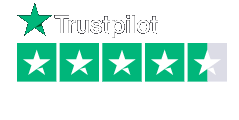Why was I on a Sales Boot Camp?
In the summer of 2018 when England was still in the World Cup we became HubSpot Partners. HubSpot is one of the leading marketing and sales software companies. It combines a variety of marketing and sales activities designed to attract web visitors, convert leads and close customers. Implemented effectively it’s like a marketing magic wand. There is also a wealth of fantastic training and support.
I was lucky enough to be selected to join their Sales Training Boot Camp. Led by David Weinhaus, sales and training rock star (also Manager of Partner Sales Enablement at HubSpot), it was one of the most enlightening training courses I have ever been on.
Even though I have been in sales and marketing for over 15 years, I learned a whole new approach which has revolutionised our agency. The fact is that customers will not accept being sold at. They want an engaging experience that is relevant and of value to them. One that offers them a solution - not beats them over the head until they cave in and buy. It was for this reason that we became HubSpot Partners and now live by the inbound marketing methodology.
What did I learn at Boot Camp?
-
The need to sell change
If you have ever been in the position of trying to sell your service or product knowing that it’s a fantastic solution for the prospect but they aren’t convinced, you’ll know how frustrating it is. The truth is that sometimes they are not ready to make that change and buy now. You can work out if they are ready to change by uncovering their goals, their challenges, and the barriers that are preventing them from achieving their goals.
How aware of those challenges and barriers are they? What plans do they have in place to overcome them (if any)? How frustrated or concerned about these are they? All this helps you identify if they are ready for change and open to your solution.
2. The 5 Whys
An important part of selling is being naturally curious. You know when you’ve hit the spot because the motivation will be personal to them. When you understand what is personally motivating them, you can utilise this to leverage the sale.
Keep asking why to dig a bit deeper, but not to the point it feels like an interrogation.
3. Find the Gap
An important part of the inbound sales part is finding the gap. The gap between where the company is now and where they want to be. That includes the turnover or profit gap from what they did last year and what they want to achieve next year. It could be a gap in their sales process or marketing. It could be a skills, knowledge or resources gap.
Once you have identified what the gap is, you should enquire what plans they have in place to close the gap and ensure they meet their goals. You might find they haven’t got a plan or solution. By reinforcing the gap and questioning their plans to overcome the gap, you add a feeling of urgency to the situation.
4. Sell it on the numbers
One of the greatest lessons I learnt at boot camp was selling using the numbers. Regardless of what business service you are selling, if you can work out what they are currently paying and where they are potentially losing money or value, you can then demonstrate the money you can make and/or save them.
When you sell a service based on the money they can save or make, it makes it a no brainer for people to buy. It means the prospect can instantly see the value. Don’t be shy and ignore the numbers. Sell it based on facts and figures.
5. Anchoring
A technique I am still working on, but an incredibly powerful one, is anchoring. Anchoring in the sales process is when you anchor the value of your services to value delivered. Whether it’s a percentage of their revenue goals for example, 10% of incremental marketing revenue, compared to the cost of a comparable alternative. For example, in our case hiring a full-time marketer or sales person.
It allows you to address and discuss the other options available to your prospect. More importantly, it enables you to demonstrate the value you are offering.
These 5 techniques along with the many others I learnt have changed how and who we sell to. It’s a much more powerful and successful sales approach that adds value and meaning for the prospect. It’s, as I’ve learnt, all about being there to offer excellent advice and assist them.
If you want to introduce an inbound approach to your sales and marketing, get in touch and tell us how we can help you.










